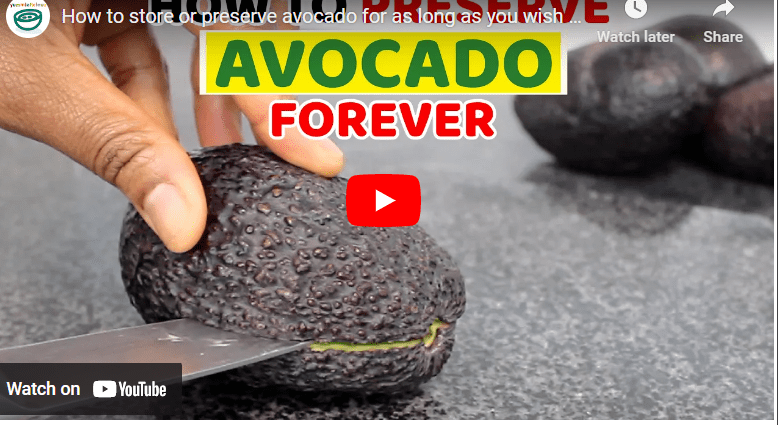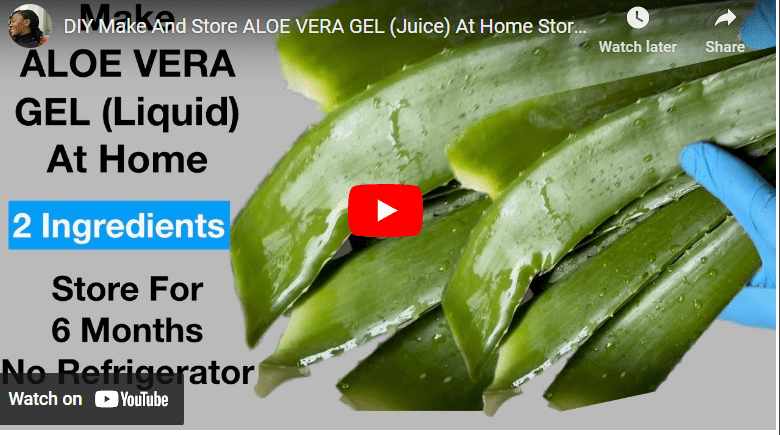Plantain flour is a nutritious and versatile ingredient that is commonly used in African, Caribbean, and Latin American cuisines.
Made from ground dried plantains, it is gluten-free, grain-free, and packed with fiber, vitamins, and minerals. Making your own plantain flour at home is a great way to ensure its quality and freshness.
Processing plantain flour is a simple process that involves washing and peeling ripe plantains, drying them in the sun, grinding them into a powder, and then sifting the powder to ensure a fine consistency. This process can be done at home, with dried plantain flour available online and in some stores.
How To Process Plantain Flour Step By Step Guide
Plantain flour is also a good source of carbohydrates, fiber, vitamins, and minerals. If you’re looking to make your own plantain flour, here is a step-by-step guide to help you.
Step 1: Selection of Raw Materials
Choosing the right type of plantains is the first step in making high-quality plantain flour. You want to choose plantains that are ripe, but not overly ripe, and have a slightly green color with some yellow spots.
Read Also: How To Preserve Spring Onions For Long Time Storage
Overripe plantains can lead to mold growth during drying and can also produce an inferior quality flour.
Step 2: Preparation of Raw Materials
To prepare the plantains, start by washing them thoroughly in cold water to remove any dirt and debris. Then, peel the plantains using a knife or vegetable peeler.
Make sure to remove all of the skin, as it can cause discoloration and bitterness in the flour. Once peeled, slice the plantains into small pieces, about 1/4 inch thick.
Read Also: How To Process Cashew Nuts At Home
Step 3: Drying the Plantains
The next step is to dry the sliced plantains. You can use a dehydrator, an oven, or simply air-dry them in the sun. However, air-drying is not recommended, as it takes longer and can increase the risk of contamination.
If using a dehydrator, arrange the sliced plantains on the trays and set the temperature to 130°F (54°C). Allow the plantains to dry for 8 to 10 hours, or until they are completely dry and brittle to the touch.
Read Also: How To Process Cassava to Garri
If using an oven, preheat it to 170°F (77°C) and place the sliced plantains on a baking sheet. Bake for 6 to 8 hours, or until the plantains are completely dry and brittle.
Step 4: Grinding the Dried Plantains into Flour
Once the plantains are dry, it’s time to grind them into flour. You can use a blender, food processor, or grain mill for this step. However, a high-powered blender or food processor is recommended, as they produce a finer and more consistent flour.
Place the dried plantains into the blender or food processor and grind them until they are completely pulverized into a fine powder.
Read Also: How To Process Coconut Oil
You may need to grind the plantains in small batches to ensure even grinding. If using a grain mill, follow the manufacturer’s instructions for grinding dried plantains into flour.
Step 5: Sifting the Flour to Remove Any Impurities
After grinding the plantains, sift the flour to remove any impurities, such as large pieces of plantain or debris. You can use a fine-mesh sieve or a flour sifter for this step. Simply pour the flour through the sieve or sifter and discard any remaining impurities.
Read Also: How To Process Maize Into Flour
Step 6: Packaging the Flour for Storage or Sale
Once the flour is sifted, it’s ready to be packaged for storage or sale. You can store the flour in an airtight container or bag in a cool, dry place for up to 6 months. It’s important to keep the flour away from moisture and humidity to prevent spoilage and mold growth.
Tips for Making High-Quality Plantain Flour
Here are some tips to help you make high-quality plantain flour:
- Choose the right type of plantains. Look for slightly green plantains with yellow spots and avoid overripe plantains.
- Use a high-powered blender or food processor for grinding the dried plantains to ensure a fine and consistent flour.
- Use a fine-mesh sieve or flour sifter to sift the flour and remove any impurities. This will result in a smoother and more uniform texture.
- Store the flour in an airtight container or bag in a cool, dry place to prevent spoilage and mold growth.
- Use clean and sanitized equipment throughout the process to prevent contamination.
Read Also: How to Process Millet into Flour
Uses of Plantain Flour
Plantain flour is a versatile ingredient that can be used in a variety of recipes. It is often used as a substitute for wheat flour in gluten-free and grain-free baking.
Plantain flour can also be used to thicken soups and stews, and as a coating for fried foods. Additionally, it can be used in smoothies or as a supplement for protein shakes.
Benefits of Using Plantain Flour
- Increases shelf life: Processing plantain into flour increases its shelf life, making it easier to store and transport.
- Versatility: Plantain flour can be used in a variety of recipes, from baking to thickening soups and stews, and can also be used as a coating for fried foods.
- Nutritional value: Plantains are a good source of fiber, vitamins, and minerals, and processing them into flour retains most of their nutritional value.
- Accessibility: Processing plantains into flour can make them more accessible to people who may have difficulty digesting grains or gluten.
Read Also: How To Process Okpa Flour
Challenges of Processing Plantain:
- Difficulty in peeling: Plantains can be difficult to peel due to their tough skin and can require more effort compared to other fruits.
- Risk of spoilage: Plantains have a high moisture content, making them susceptible to spoilage if not dried properly before processing.
- Equipment: Processing plantain into flour requires specialized equipment, such as a dehydrator and a grinder, which can be expensive and may not be easily accessible.
- Labor-intensive: Processing plantain into flour can be labor-intensive, especially during the drying and grinding stages, which may require several hours of work.
Plantain Flour Recipes
- Plantain Flour Pancakes: Mix plantain flour with eggs, milk, and sugar to make a batter, and cook on a skillet. Serve with fruit or syrup.
- Plantain Flour Pizza Crust: Combine plantain flour with olive oil, salt, and water to make a dough, and roll out into a pizza crust. Top with your favorite toppings and bake.
- Plantain Flour Fufu: Mix plantain flour with water to make a dough, and cook in boiling water until it forms a sticky dough. Serve with soup or stew.
- Plantain Flour Cookies: Combine plantain flour with butter, sugar, and chocolate chips to make a cookie dough, and bake in the oven.
Read Also: How To Process Palm Kernel Oil
How to process Plantain flour at home”
Processing plantain flour at home requires several steps, including selecting and preparing raw materials, drying, grinding, and packaging the flour. Here’s a step-by-step guide on how to process plantain flour at home:
Materials Needed:
- Ripe or green plantains
- Knife
- Cutting board
- Dehydrator or oven
- Food processor or grain mill
- Sifter or sieve
- Airtight container or packaging material
Step 1: Select and Prepare Raw Materials
Choose ripe or green plantains for processing. Peel the plantains and slice them into thin pieces, either lengthwise or crosswise, depending on your preference. It’s important to ensure the slices are of uniform thickness to ensure even drying.
Read Also: How To Process Pepper
Step 2: Dry the Plantain Slices
To dry the plantain slices, you can use either a dehydrator or an oven. If using a dehydrator, spread the slices in a single layer on the dehydrator trays and dry them according to the manufacturer’s instructions.
If using an oven, place the slices on a baking sheet lined with parchment paper and bake them at 150°F (65°C) for about 6-8 hours, or until the slices are completely dry and crispy.
Step 3: Grind the Dried Plantain Slices
Once the plantain slices are dry, grind them into flour using a food processor or grain mill. If using a food processor, pulse the dried slices until they turn into a fine powder. If using a grain mill, adjust the settings to a fine grind and pass the dried slices through the mill.
Step 4: Sift the Flour
To remove any impurities and ensure a smooth texture, sift the plantain flour using a sifter or sieve. Discard any large pieces or impurities that remain in the sieve.
Step 5: Package the Flour
Store the plantain flour in an airtight container or packaging material. It’s best to store the flour in a cool, dry place away from direct sunlight.
Ripe Plantain Flour
Ripe plantain flour is made from ripe plantains that are peeled, sliced, and dehydrated before being ground into flour. Ripe plantains have a higher sugar content compared to green plantains, resulting in a sweeter and more flavorful flour. Ripe plantain flour is often used in sweet recipes such as pancakes and cookies.
How To Use Plantain Flour
Plantain flour can be used in a variety of recipes, including baked goods, soups, stews, and coatings for fried foods.
It can also be used as a supplement in protein shakes or smoothies. To use plantain flour in baking, it can be substituted for wheat flour at a 1:1 ratio.
When using plantain flour to thicken soups and stews, it should be mixed with cold water or broth before adding it to the dish to prevent clumping.
Plantain Flour Processing Machine
Plantain flour processing machines are specialized equipment used to process plantains into flour.
These machines include dehydrators, grinders, sifters, and packaging machines.
Dehydrators are used to dry the plantain slices before grinding, while grinders are used to grind the dried plantains into flour.
Sifters are used to remove any impurities from the flour, and packaging machines are used to package the flour for storage or sale.
Plantain Flour Production Pdf
A Plantain Flour Production PDF is a guide that provides detailed instructions on how to produce plantain flour.
It typically includes information on selecting and preparing raw materials, drying, grinding, and packaging the flour for storage or sale.
A Plantain Flour Production PDF can be a helpful resource for those looking to start a plantain flour business or those interested in producing their own plantain flour at home.
Conclusion
Plantain flour is a nutritious and versatile ingredient that can be used in a variety of dishes. With the right selection and preparation of raw materials, drying, grinding, and sifting, you can make high-quality plantain flour at home. Whether you’re looking to make gluten-free and grain-free baked goods or want to incorporate plantain flour into your diet, this guide can help you get started.



